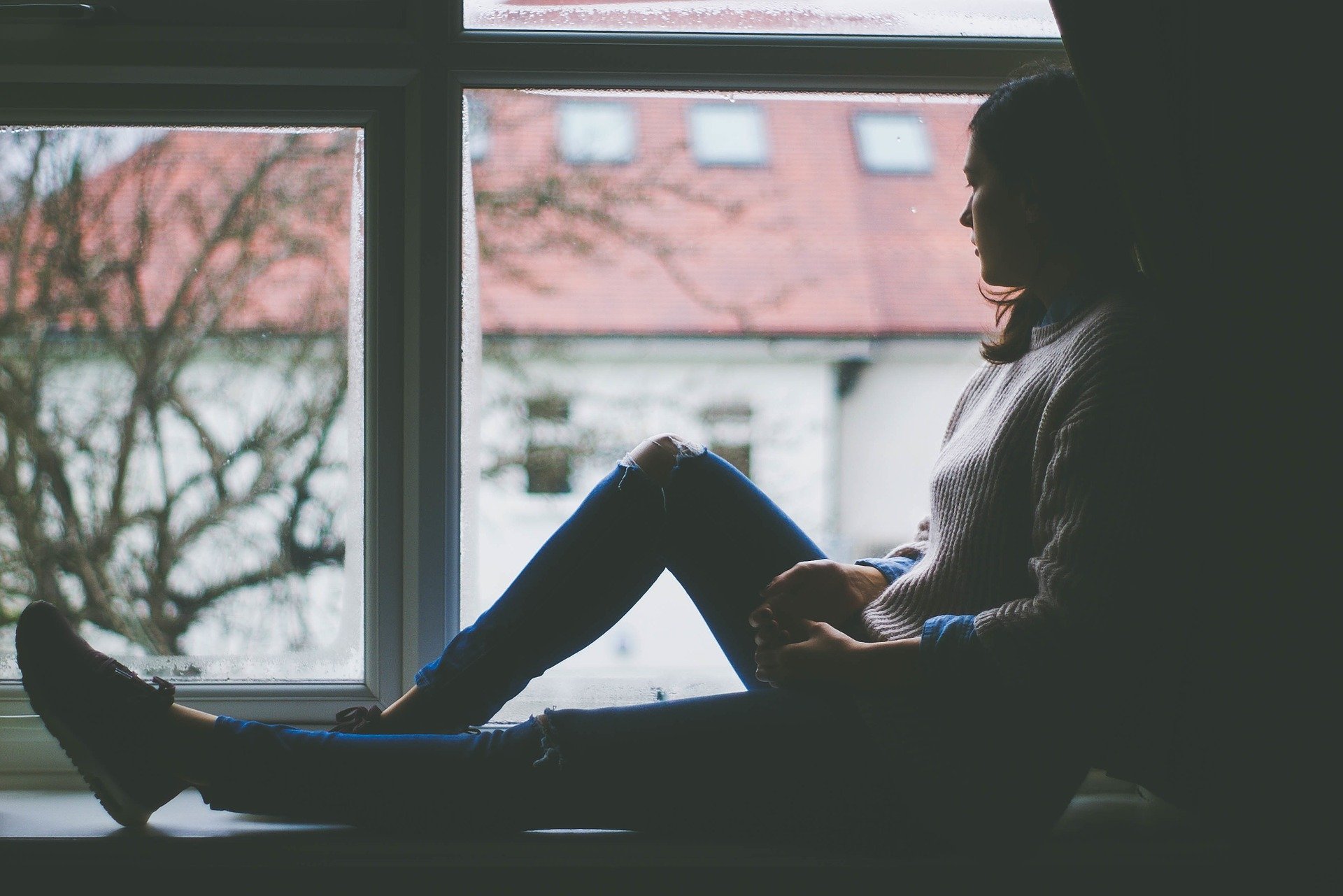Depression and low mood is at an all time high with the isolation, fear and worries associated with COVID. I read this newsletter from Dr. Chris Duroy, psychologist at Oklahoma Heart Hospital, who addressed this very issue and it was spot on so I had to share! Please read this if you are having trouble with isolation, fear or are worrying. He has some very practical steps on how to take the first step in moving forward.
QUESTION from Anonymous in Oklahoma:
I look in the mirror and don’t recognize the face looking back at me. I only leave the house to go to work or get groceries. I’ve stopped going to church, seeing friends. In the beginning it was because we were supposed to ‘socially distance’ but I can’t seem to get back to who I used to be. I keep telling myself I just need to take that first step but I can’t seem to do it. Do you have any suggestions for how to start?
Dear Anonymous in Oklahoma,
Well, looks like you’ve caught it too. Many who have attempted to keep from catching the COVID have ended up catching something else; depression. It can be as debilitating in many ways, and can often take longer from which to recover. Of course, without a full evaluation by a licensed professional, we can’t be sure that you are suffering from depression, but being the arm-chair psychologist that I am, it sure sounds like what you’ve got going on there. So, what do we do from here? There’s all kinds of disclaimers that I should throw in here at this point such as, is there a history of depression in your family, is this your first episode, have you been treated before, if so – what seemed to work best for you, etc. etc. but, let’s assume that your depression is a reactionary type. You’ve not struggled with depression before and we’re pretty sure that your depression is solely a result of the pandemic and the subsequent social isolation. If that’s the case, then my first suggestion is behavioral change. We Americans are quick to head to the medicine cabinet all too soon sometimes, and this is if often the case with depressive disorders. Additionally, if behaviors, or a lack of them, got you to feeling this way, then it follows that behaviors, just might be the solution as well.
I like to think of mood as existing on a spiral. It’s constantly making little adjustments up and down that spiral, but generally stays within a functional range. Some days are a little better than others and your mood has worked its way up a bit and others are a little worse and its worked its way down, but without any real change in our lives, we tend to stay within our range. Some of us are Eeyores and are mildly grumpy all the time and some of us are annoyingly more happy than we should be, but most of us fall in the range of what Freud called “ordinary human unhappiness.” When we do move out of our range on the spiral, the direction tends to be influenced by activity and socialization. When our activity level drops, we can start to get depressed and we work our way a bit down the spiral. As we get more depressed, we stop doing the things that helped maintain our mood (church, seeing friends, exercise, etc.). As we start crossing things off the list of things that we do that we enjoy, we become more depressed and we do less. Our mood starts to sour, we become more irritable and easily agitated and then the final stages tend to be our neglect of hygiene. We stay at home, we stay in our pajamas all day, we shower once a week. The next thing you know, you’ve rented out the whole top floor of the Desert Inn in Las Vegas, you’re locked in a room for months, letting your fingernails grow and drinking milk out of very particular bottles that your assistant leaves outside of your door. You get the picture. It doesn’t have to get that bad. You don’t have to reach those depths. You can turn this around. All you need to do is buy my 39 volume video series on how to climb out of depression. How much would you pay for that? $159? $129? Not even close, it’s all yours for three easy payments of $33 each. Or, you could keep reading.
So, we know what leads to depression from a reactionary/behavioral perspective. It follows that the opposite could get us moving back up that spiral. We don’t exercise because we’re in great shape, we get in great shape because we exercise. We don’t go to the movies because we are entertained sitting home alone, we go the movies to be entertained. See? The behavior comes first and the feeling follows. When we’re depressed our logic gets turned on our head and we decide that we are going to wait to feel better before we start doing things. That leads to less activity, longer naps and a further slide down the spiral. I know it’s simplifying things, but the reality is that you have to start implementing the things that you haven’t been doing in order to gain the enjoyment you used to get from them and in turn improve your mood. So, you change your behavior. You take responsibility for your mood. You fake it until you make it. You do things, your mood improves, you start doing more and your mood improves even further. It won’t feel the same initially, but you have to keep at it and eventually you’ll start enjoying those things more and more and your mood will improve.
My suggestion is that you should start following a routine even if you have nothing to do. Go to bed at a normal hour and try to get a good night’s sleep. You still get up at your normal time, you still shower, you still get yourself together so that you appear ready to take on the day. Then, you start sprinkling in activities that you used to enjoy a little at a time. Don’t exhaust yourself or set yourself up for failure. Add one thing at a time. One of our employees had a heart attack years ago. She and I were chatting and she tells me, “When I get home, I’m going start exercising every day, I’m going to stop smoking, I’m going to eat the Pritikin diet, I’m going to go to counseling and fix my head and I’m going to start meditating for 3 hours a day.” My response was, “I bet you’ve quit all that in two weeks and are back to the old you in no time.” It’s a different kind of psychology… My point was, that’s too much. Let’s accomplish one goal (the easiest) and then move on to progressively harder goals. Let’s build some steam and work our way up that spiral. In your case, let’s do one thing different; one thing that you have given up lately. Remember the actions come first then the feelings. Once you’ve checked that first activity off the list, add another. Put them on your calendar in your phone or better yet, tell a friend and have them hold you accountable. As you start making your life look as much like it did before you got depressed, your mood will trend back that way too. If you are having trouble working your way back up that spiral and after a few weeks, you aren’t making any progress and you are still feeling this way, then you may need the accountability that comes with going to see a counselor to help you get back on track. Again, we have an EAP program designed for just these instances.
Good luck in your endeavor. Don’t be afraid to ask for help. We all need it from time to time.
Chris
************
It is always important to reach out. You are NOT alone. Hang in there. We will get thru this…together!
To your health,
Laura









